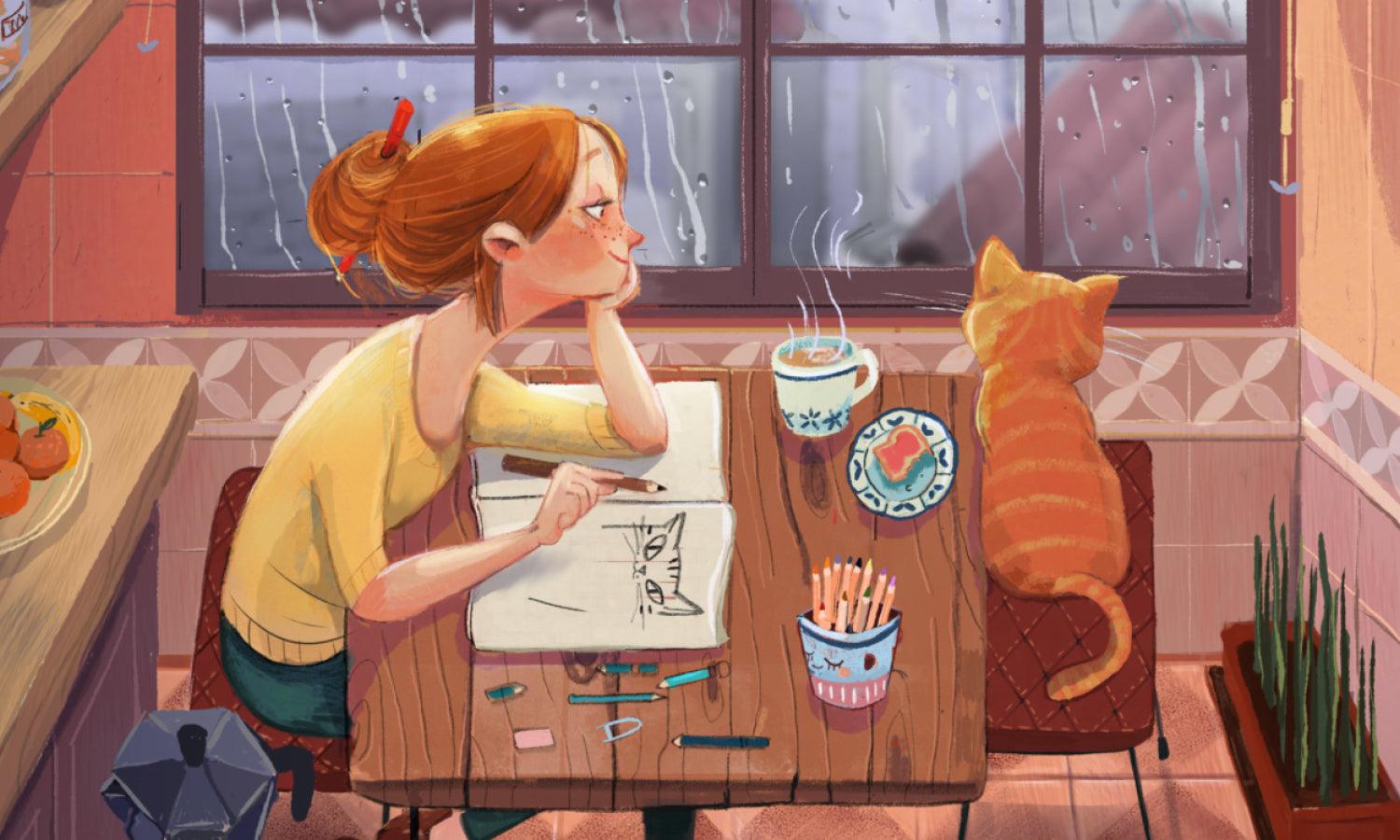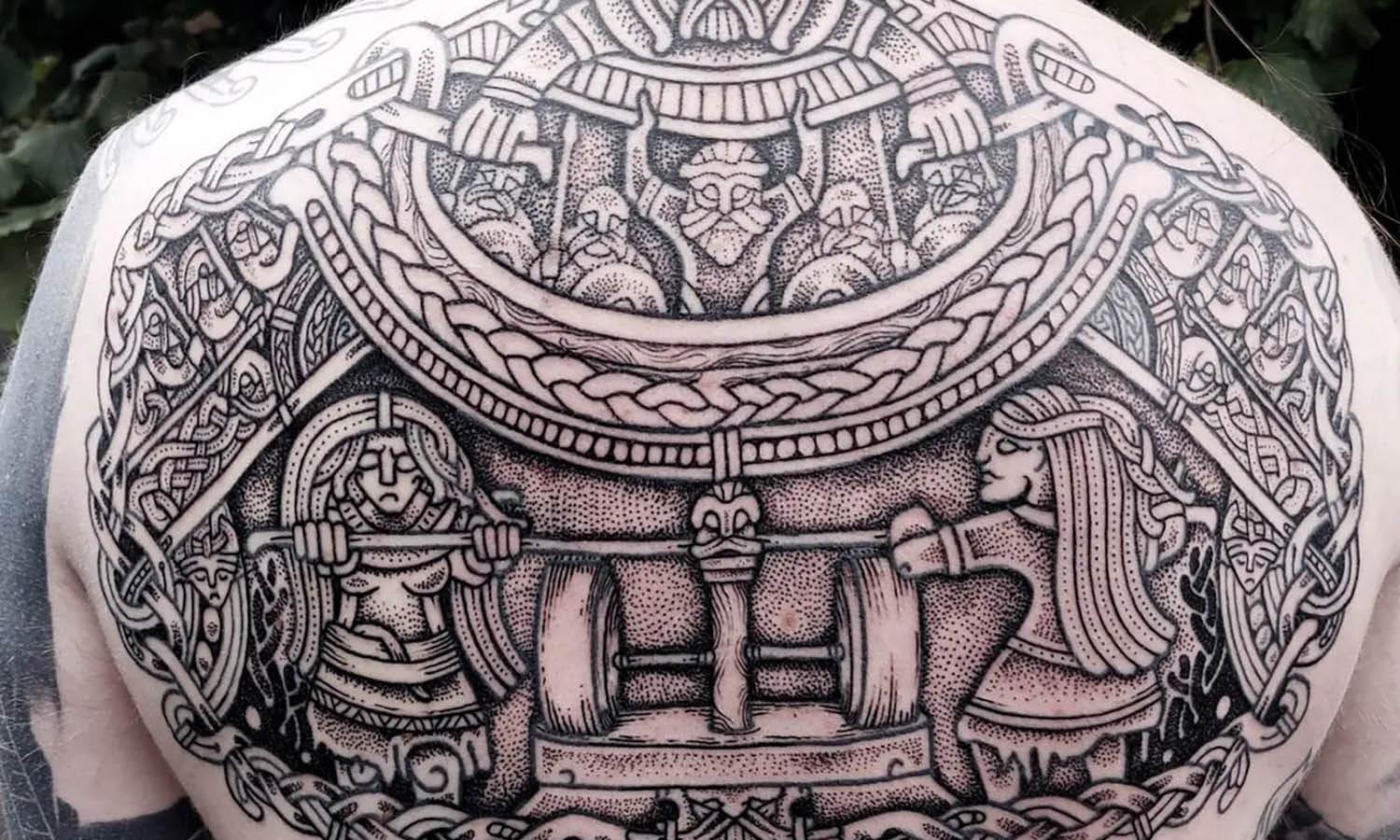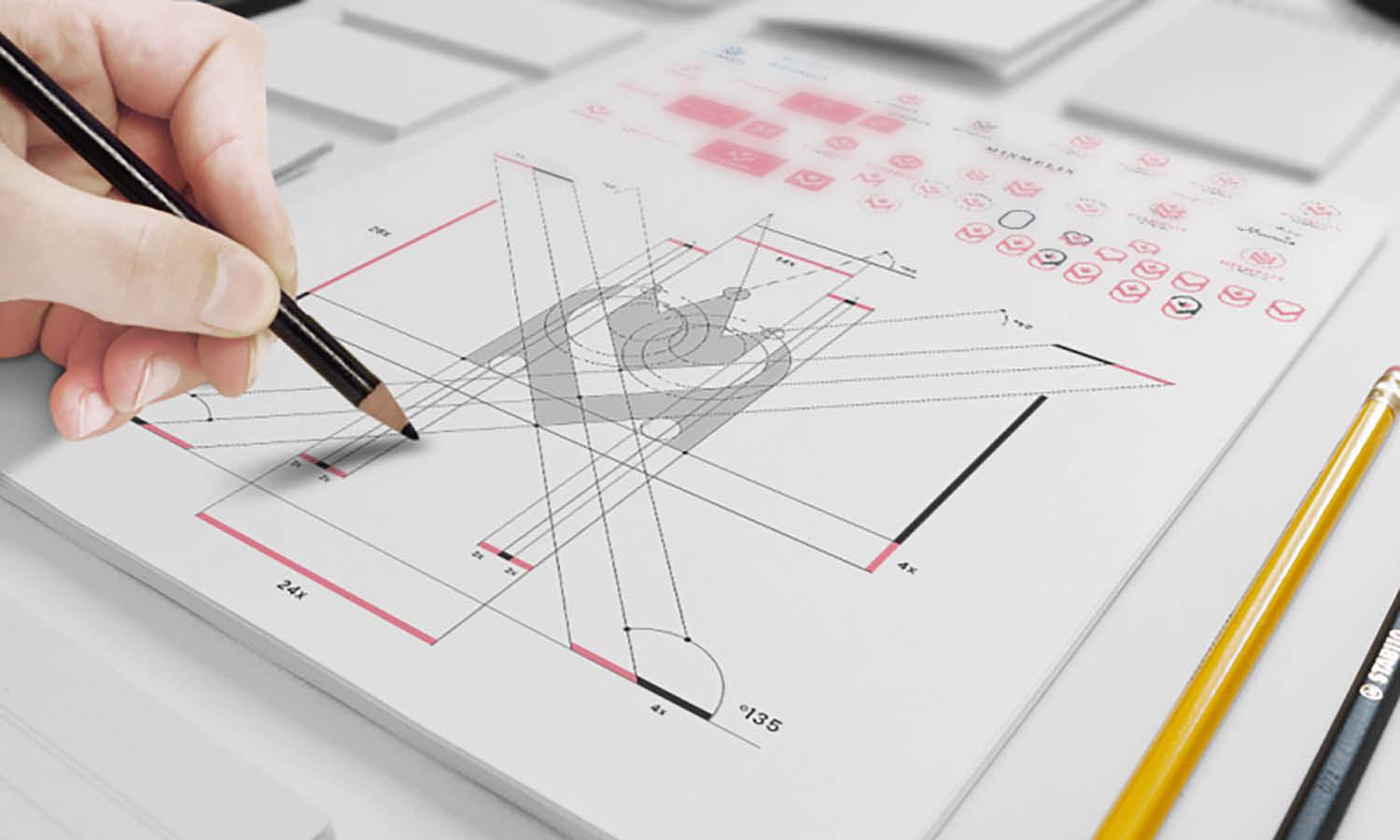What is Design Theory, and How is It Used in The Real World?

Design isn’t just about making things look attractive—it’s about intention, structure, and purpose. At the heart of this understanding lies design theory, a body of knowledge that guides how designers approach problems, interpret visuals, and deliver meaningful outcomes. Design theory encompasses the principles, philosophies, and methodologies that influence everything from layout and color choices to branding and user experience.
Whether creating a website, product packaging, or architectural blueprint, design theory offers a framework that connects creativity with logic. It encourages designers to make informed decisions based on user behavior, visual perception, and contextual relevance. By doing so, it ensures that design isn't random or purely decorative but driven by function and clarity.
In real-world practice, design theory supports effective communication, enhances usability, and builds emotional connections with audiences. It equips professionals to solve complex challenges through a combination of aesthetics and reasoning. Understanding design theory is essential not only for professional designers but also for anyone involved in shaping visual environments. It’s the invisible blueprint behind compelling visuals, helping transform abstract ideas into practical, powerful designs that resonate in everyday life.
Design Theory Provides a Conceptual Framework
At its core, design theory is a set of principles that offers designers a conceptual roadmap. It is the lens through which visual problems are interpreted, dissected, and eventually solved. Rather than relying solely on intuition or aesthetics, design theory equips professionals with structured thinking—allowing creative decisions to be informed by logic, history, psychology, and user behavior.
A strong conceptual framework sets the foundation for every visual choice. Whether working on branding, product packaging, or user interfaces, this theory helps designers analyze the goals of a project, understand the context, and construct meaningful outcomes. It connects abstract ideas with tangible solutions. For example, principles like contrast, alignment, proximity, and repetition are not just visual tools—they are components of a broader system that explains how viewers perceive and respond to design.
Design theory also encourages critical reflection. Designers can step back from a project and evaluate whether a layout communicates hierarchy effectively or whether a typeface truly matches the tone of a message. Without this framework, design risks becoming arbitrary or purely decorative.
Furthermore, design theory is adaptable. It evolves with culture, technology, and audience needs, but its foundation remains stable enough to provide consistent guidance. In essence, this theory serves as the bridge between creativity and clarity—making design not just a matter of taste, but a thoughtful practice with direction and discipline.
It Balances Form and Function
A central pillar of design theory is the idea that good design must balance form and function. It’s not enough for a design to look appealing; it must also serve its purpose effectively. This principle applies across disciplines—from graphic design to architecture, industrial design, and digital interfaces.
Form refers to the aesthetic qualities: color, shape, texture, and overall visual appeal. Function, on the other hand, deals with usability, performance, and communication. Design theory insists that these two elements must support each other. A sleek product that’s difficult to use fails functionally, while a utilitarian interface with poor visual hierarchy might confuse users or dilute brand identity.
By applying this theory, designers assess how each visual decision influences the outcome. For instance, in web design, buttons need to be visually distinct (form) while guiding users toward the intended action (function). In editorial design, a bold headline may catch the eye (form), but the typography and spacing must also support readability (function).
Design theory helps resolve the tension between artistic creativity and practical purpose. It guides decisions so that aesthetics enhance usability, and utility does not sacrifice visual engagement. The result is a design that is both elegant and effective.
It Influences Problem-Solving Approaches
One of the most valuable aspects of design theory is its role in shaping how designers approach problem-solving. Rather than jumping straight into visuals, design theory encourages a deeper analysis of the problem before crafting a solution. This mindset helps designers uncover root causes, define objectives clearly, and consider user needs holistically.
Design theory provides structured methods such as design thinking, which involves empathy, ideation, prototyping, and testing. These stages ensure that solutions are not just visually satisfying but strategically aligned with the project’s purpose. For instance, a logo design project might begin by analyzing brand values and audience expectations—well before selecting fonts or colors.
This theoretical approach also promotes lateral thinking, allowing designers to explore multiple perspectives and unconventional ideas. Through concepts like iteration and feedback loops, design theory keeps the creative process flexible and responsive. It’s not about arriving at a single “perfect” solution but finding the most effective one through exploration and refinement.

Design Theory and Visual Hierarchy
Visual hierarchy is a key concept in design theory that dictates the arrangement of visual elements to signify their importance, guiding the viewer’s eye through the content. Effective visual hierarchy ensures that vital information is immediately apparent and accessible, enhancing user experience and engagement. This is achieved through variations in size, color, texture, spacing, and contrast. Larger elements tend to attract attention first, making size a powerful tool in establishing focal points. Color can be used to highlight important features and guide the viewer through different layers of information.
Textures and patterns draw attention and can subtly enhance the importance of less prominent items. Spacing, or the use of white space, helps to define relationships between components, clarifying which parts of the design are meant to be read as important or secondary. By manipulating these elements, designers create a path for the viewer’s eye to follow, ensuring a logical, intuitive, and aesthetically pleasing experience.
The Role of Color Theory in Design
Color theory is an integral part of design theory, playing a crucial role in the effectiveness of visual communication. It revolves around the science and art of using color to achieve desired effects, evoke emotions, and convey messages. At its core, color theory explains how colors interact with each other and how they can be combined effectively to enhance user experience. Designers use color theory to select palettes that increase visual appeal and support usability. Colors have the power to influence mood and behavior, dictate attention, and differentiate items, making their strategic use essential in design.
For instance, warm colors such as red, orange, and yellow are often associated with energy and happiness, while cool colors like blue, green, and purple tend to communicate calmness and professionalism. Complementary colors, which are opposite each other on the color wheel, create vibrant looks when used together, but need to be balanced correctly to avoid visual tension. Analogous colors, which are next to each other on the wheel, offer more harmony and are pleasing to the eye.
Understanding color theory allows designers to create consistency within a design, enhance the readability of text, and guide the viewer’s attention to the most important elements. This knowledge ensures that designs are not only aesthetically pleasing but also functionally effective, making color theory a fundamental component of design theory.
Typography and Design Theory
Typography is a fundamental aspect of design theory that involves the art and technique of arranging type to make written language legible, readable, and appealing when displayed. The choice of typography can dramatically affect how a message is perceived and received. Design theory uses typography to enhance communication by ensuring text not only fits the overall design aesthetically but also conveys the right mood and information hierarchy.
Effective typography management involves selecting appropriate typefaces, type sizes, line lengths, line-spacing (leading), and letter-spacing (tracking and kerning). Each of these elements plays a critical role in making the design accessible and easy to understand. For example, a well-chosen typeface can evoke a particular atmosphere or emotion, be it professional, whimsical, or serious. Similarly, the correct line length makes reading more comfortable, while adequate spacing prevents the text from appearing cluttered or overwhelming.
Designers utilize typography to guide the viewer's attention to various parts of the text, prioritizing content according to the design’s overall objectives. By varying font weights and sizes, designers create a visual hierarchy that organizes the content, making it easier to navigate and absorb.
The Application of Grid Systems
Grid systems are a vital component of design theory, providing a structural framework that helps designers maintain consistency and alignment throughout their work. These systems are used to organize content on a page, whether it's a print layout, a web page, or an interactive interface. By dividing the space into predictable and harmonizable margins, columns, and rows, grid systems enable designers to place text, images, and other graphical elements in a way that is both aesthetically pleasing and functionally superior.
Grids help create a cohesive look and feel by ensuring elements are aligned and distributed evenly. This not only enhances the professionalism of the design but also improves readability and usability. For web design, grids are crucial for creating responsive layouts that adapt well across different screen sizes and devices. They ensure that elements resize and reposition correctly, providing a seamless user experience.

Design Theory in Branding
Design theory plays a crucial role in branding, as it provides the strategic framework that guides the visual representation of a brand. Brands leverage design theory to ensure their visual identity aligns with their messaging and core values, creating a consistent image that resonates with the audience. The application of design theory in branding encompasses the use of color, typography, and imagery to forge a strong, recognizable brand identity.
Effective branding uses design theory to communicate a company’s ethos and market position through logos, color schemes, typography, and overall design aesthetics. This strategic use of visual elements makes a brand easily identifiable and differentiates it from competitors. Design theory aids in crafting a cohesive brand experience that consistently communicates the desired message across all touchpoints, including digital and physical mediums.
Moreover, design theory helps in establishing emotional connections with the audience. For example, the careful selection of colors can evoke specific emotions and associations, enhancing brand recall. Typography in branding not only conveys personality but also increases readability and impact in marketing materials.
How Design Theory Supports Problem-Solving
Design theory serves as a critical problem-solving tool by providing a structured approach to creating solutions that are not only functional but also aesthetically pleasing. By applying design principles, designers can address user needs and challenges in a systematic way. Design theory guides the decision-making process, from conceptualization to the final product, ensuring that every design choice is purposeful and contributes to solving the identified problem.
For instance, in user interface design, design theory is applied to enhance usability and improve user experience. Principles such as alignment, contrast, and balance are used to create interfaces that are easy to navigate and intuitive. This not only solves the problem of user frustration but also increases engagement and satisfaction.
In environmental design, design theory helps in creating spaces that are both efficient and conducive to human activity. By understanding human behavior and environmental interaction, designers can create spaces that meet the needs of their users, solving problems related to flow, accessibility, and comfort.
Real-World Examples of Design Theory in Advertising
Design theory is extensively applied in advertising to create campaigns that capture attention, convey messages clearly, and ultimately drive consumer behavior. Effective advertising relies on the strategic use of design principles to create visually appealing and memorable ads. Here are some real-world examples of how design theory is used in advertising:
Billboard Design: Billboards often use large, bold text and high-contrast colors to grab the attention of drivers and pedestrians from a distance. Design theory dictates the use of scale and contrast to ensure legibility and impact.
Print Ads: In print media, the layout is carefully planned using grids to guide the placement of images and text. This ensures a balanced composition that is easy on the eyes and effectively guides the reader through the content.
Digital Ads: Digital advertising leverages design theory through the use of motion graphics and interactivity. Principles like timing and continuity are crucial for creating engaging online ads that hold viewer attention.
Social Media Campaigns: Design theory informs the creation of social media graphics that are optimized for sharing. Consistency in visual elements across a campaign builds brand recognition and aids in storytelling.
TV Commercials: Television ads use narrative structure and visual pacing to engage viewers. Design theory helps in sequencing scenes for maximum emotional impact and message retention.
These examples illustrate how design theory underpins effective advertising by ensuring that each element, from typography to color palette, works harmoniously to influence perceptions and behaviors.
Conclusion
In every creative field, design theory serves as a vital compass—shaping decisions, refining aesthetics, and grounding ideas in purpose. From guiding layout structure to influencing user experience, its role extends far beyond the sketchpad. Designers rely on theory to navigate complex challenges with clarity and intent, ensuring that visuals do more than look good—they function effectively. By understanding and applying these principles, professionals can create work that communicates, engages, and endures. Whether you're designing for print, digital, or physical spaces, design theory remains a fundamental tool in turning thoughtful concepts into impactful, real-world solutions.
Let Us Know What You Think!
Every information you read here are written and curated by Kreafolk's team, carefully pieced together with our creative community in mind. Did you enjoy our contents? Leave a comment below and share your thoughts. Cheers to more creative articles and inspirations!
















1 comment
wonderful
difren
Leave a Comment